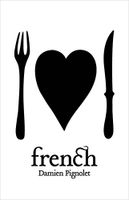Advertisement
Meat, Poultry & Game Glaces
Published 2005
The word glace is a French culinary term for stocks that have been reduced to an essence - generally ⅕ of the original volume. Their role is to provide an instant flavouring boost to pan juices in the construction of sauces; they are too strong in flavour to be used as sauces in their own right.
Glace de viande, derived from meat stock, was used as a valuable nutrient for sailors during their long voyages in the sixteenth and seventeenth centuries.
The classical kitchen used these glaces to enrich sauces, soups and sautéed dishes in much the same way as some cooks use commercial stock cubes today. The role of glaces in the modern restaurant and home kitchen changed with the onset of nouvelle cuisine in the 1970s, when many prominent French chefs decided to do away with the binding agent called roux [butter and flour] because they felt it masked the flavour of their sauces. The use of a roux also meant lengthy cooking to achieve the body and purity they wanted. Sauce construction in nouvelle cuisine instead used reduction to provide the character, with the glace forming a pure foundation and finishing touches of cold butter helping to bind the sauce.

